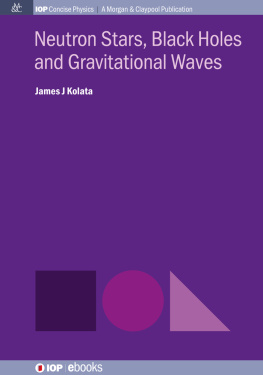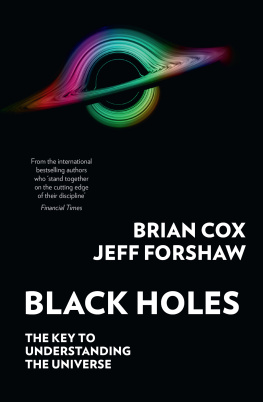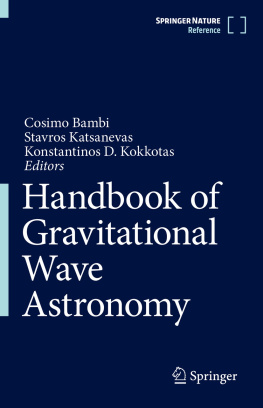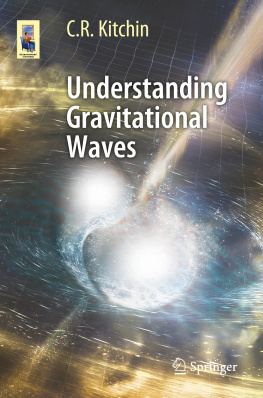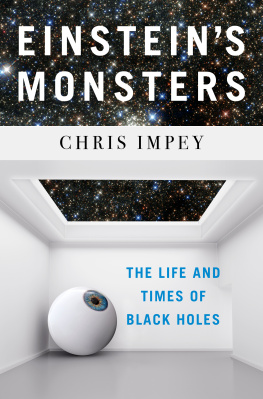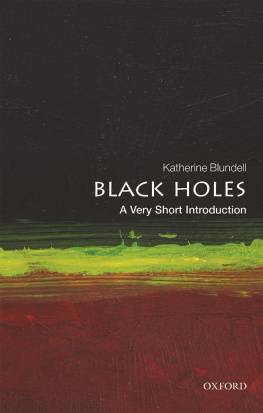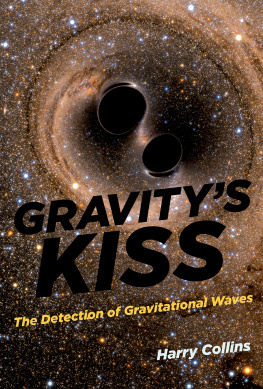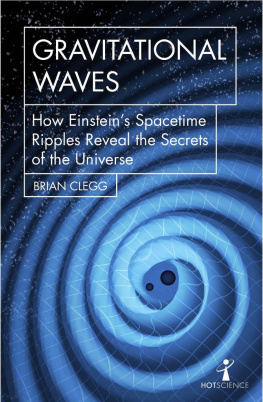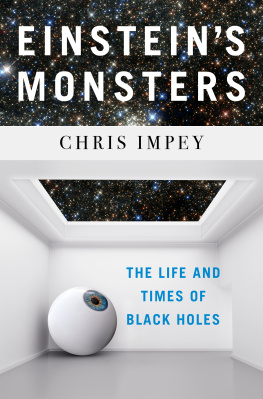James J Kolata - Neutron Stars, Black Holes and Gravitational Waves
Here you can read online James J Kolata - Neutron Stars, Black Holes and Gravitational Waves full text of the book (entire story) in english for free. Download pdf and epub, get meaning, cover and reviews about this ebook. year: 2019, publisher: Morgan & Claypool Publishers, genre: Children. Description of the work, (preface) as well as reviews are available. Best literature library LitArk.com created for fans of good reading and offers a wide selection of genres:
Romance novel
Science fiction
Adventure
Detective
Science
History
Home and family
Prose
Art
Politics
Computer
Non-fiction
Religion
Business
Children
Humor
Choose a favorite category and find really read worthwhile books. Enjoy immersion in the world of imagination, feel the emotions of the characters or learn something new for yourself, make an fascinating discovery.
- Book:Neutron Stars, Black Holes and Gravitational Waves
- Author:
- Publisher:Morgan & Claypool Publishers
- Genre:
- Year:2019
- Rating:4 / 5
- Favourites:Add to favourites
- Your mark:
- 80
- 1
- 2
- 3
- 4
- 5
Neutron Stars, Black Holes and Gravitational Waves: summary, description and annotation
We offer to read an annotation, description, summary or preface (depends on what the author of the book "Neutron Stars, Black Holes and Gravitational Waves" wrote himself). If you haven't found the necessary information about the book — write in the comments, we will try to find it.
Neutron Stars, Black Holes and Gravitational Waves — read online for free the complete book (whole text) full work
Below is the text of the book, divided by pages. System saving the place of the last page read, allows you to conveniently read the book "Neutron Stars, Black Holes and Gravitational Waves" online for free, without having to search again every time where you left off. Put a bookmark, and you can go to the page where you finished reading at any time.
Font size:
Interval:
Bookmark:

Neutron Stars, Black Holes and Gravitational Waves
James J Kolata
University of Notre Dame, Notre Dame, IN, United States of America
Morgan & Claypool Publishers
Copyright 2019 Morgan & Claypool Publishers
All rights reserved. No part of this publication may be reproduced, stored in a retrieval system or transmitted in any form or by any means, electronic, mechanical, photocopying, recording or otherwise, without the prior permission of the publisher, or as expressly permitted by law or under terms agreed with the appropriate rights organization. Multiple copying is permitted in accordance with the terms of licences issued by the Copyright Licensing Agency, the Copyright Clearance Centre and other reproduction rights organizations.
Rights & Permissions
To obtain permission to re-use copyrighted material from Morgan & Claypool Publishers, please contact .
ISBN 978-1-64327-422-5 (ebook)
ISBN 978-1-64327-419-5 (print)
ISBN 978-1-64327-420-1 (mobi)
DOI 10.1088/2053-2571/aafb08
Version: 20190401
IOP Concise Physics
ISSN 2053-2571 (online)
ISSN 2054-7307 (print)
A Morgan & Claypool publication as part of IOP Concise Physics
Published by Morgan & Claypool Publishers, 1210 Fifth Avenue, Suite 250, San Rafael, CA, 94901, USA
IOP Publishing, Temple Circus, Temple Way, Bristol BS1 6HG, UK
To my wife Ann for her constant encouragement during the course of this book project.
A little over a century ago, Albert Einstein published his General Theory of Relativity (GTR). Originally conceived as an extension of his Special Theory of Relativity (STR) to systems that are accelerating relative to each other, it turned out to be a new theory of gravity. Since gravity, perhaps counterintuitively, is actually a very weak force, measureable differences between the predictions of Newton's theory of gravity and the GTR only appear in extreme astrophysical scenarios. Over the years, the GTR has been verified again and again, most interestingly in the discovery of black holes, objects that are so massive that even light can't escape from their surfaces. However, one never-verified prediction was that of gravitational radiation. This was the idea that gravity, under certain circumstances, could propagate through space as a wave, similar in some respects to the electromagnetic radiation we know as light. The impetus for this book was the very recent (2015) discovery of gravity waves.
After brief discussions of the most relevant properties of waves, the STR, and the GTR, the evolution of massive stars to produce exotic objects such as neutron stars and black holes is described. The properties of black holes are more extensively discussed since these provide testing grounds for the GTR. Next, the history of attempts to directly observe the elusive gravity waves, and the technological advances that ultimately led to their detection, are related. Finally, the fact that this discovery has led to the formation of the new science of gravity wave astronomy is detailed. The text contains many links to websites that extend and clarify the discussion. By following these, the reader can obtain a much more in-depth understanding of many of the concepts introduced here.
I acknowledge with gratitude the assistance of Jeanine Burke, Karen Donnison, and Melanie Carlson in the production of this manuscript in its final form.
James J Kolata

James J Kolata is an emeritus professor of physics at the University of Notre Dame in the United States of America and a Fellow of the American Physical Society. He is the author of over 300 research publications in nuclear physics, as well as the book Elementary Cosmology: From Aristotles Universe to the Big Bang and Beyond, which is also a part of the IOP Concise Physics Series.
In February of 2016, the world of physics and astronomy was shaken by a truly remarkable report in the journal Physical Review Letters: Gravitational Waves had been directly detected. Predicted by Albert Einsteins General Theory of Relativity (GTR), published one hundred years earlier in 1916, gravitational waves were only the latest of many fantastic phenomena stemming from this ground-breaking work. The actual observation, by groups in the United States of America and Italy, actually occurred in September of the previous year. The intervening 5 months were used to make extensive checks of the observation in order to ensure that it wasnt, for example, a result of some failure in the detection equipment or any other anomaly. This is important for any scientific observation, but especially so in this case because observation of gravitational waves had been reported nearly 50 years earlier in the same journal. That report was ultimately shown to be wrong, both experimentally since it couldnt be reproduced by subsequent observations and theoretically since the magnitude of the observed effect was far too great to be explained in the context of Einsteins theory. Nevertheless, it generated a 50 year quest to actually observe these predicted waves using more and more sensitive instruments, which finally succeeded. Since then, five or six more such gravity-wave events have been seen and confirmed. One of them was located with a high enough degree of accuracy that its source could also be observed with optical telescopes, resulting in an incredible amount of information on topics as diverse as gamma-ray bursts and the synthesis of the chemical elements in the Universe.
The fact that it took so long for the quest to be fulfilled testifies to the extreme weakness of the expected signals, due both to the astronomical distances to the objects creating them and, as we shall see, to the relative weakness of the force of gravity itself. In fact, it appears that events strong enough to be detected at the present time can only be generated by the interactions of very exotic objectsneutron stars or black holes. Both are extremely massive objects that are the end stages of the life of certain stars, although black holes may also result from the merger of many, perhaps billions, of stars in dense regions, such as at the center of the Milky Way (and likely most other galaxies). Black holes themselves are one of the predictions of the GTR, though the concept was actually first proposed nearly 150 years before Einstein developed his theory. In the following chapters, well describe both of these exotic objects, demonstrate how their interactions can lead to gravitational waves that can be detected on Earth, and clarify the nature of the expected signals. In order to do this, it will first be necessary to discuss the GTR, its predictions of neutron stars and black holes, the history of attempts to observe gravity waves, and the development of modern instrumentation that was finally sensitive enough to observe gravitational radiation. Lastly, well show how this new capability has expanded the range and scope of traditional optical astronomy and in the process ushered in a new age of multimodal astronomy. This exciting new discipline opens up the potential for seeing objects and phenomena in the Universe that had heretofore been nearly invisible.
Font size:
Interval:
Bookmark:
Similar books «Neutron Stars, Black Holes and Gravitational Waves»
Look at similar books to Neutron Stars, Black Holes and Gravitational Waves. We have selected literature similar in name and meaning in the hope of providing readers with more options to find new, interesting, not yet read works.
Discussion, reviews of the book Neutron Stars, Black Holes and Gravitational Waves and just readers' own opinions. Leave your comments, write what you think about the work, its meaning or the main characters. Specify what exactly you liked and what you didn't like, and why you think so.

